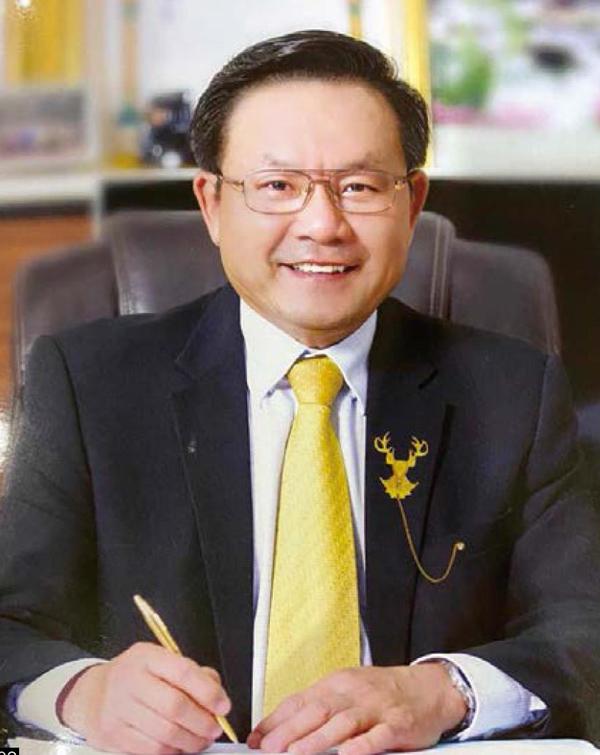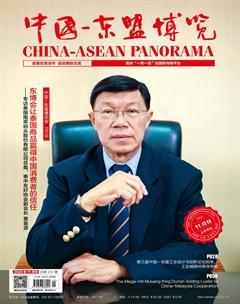老挝:强基建 方能联世界
黎敏


对于东盟大多数国家而言,他们都有加强交通基础设施建设的意愿,作为东盟中唯一的内陆国,老挝的这一意愿显得更为迫切。通过制定“变陆锁国为陆联国”的国家战略,老挝向世界大声宣告着她希望联通世界的决心。
从共建“一带一路”,到关注国际陆海贸易新通道(以下简称“陆海新通道”)建设,从参与澜湄合作、泛北部湾经济合作,到借势中国—东盟博览会,老挝正依托自身联通中国与多个东盟国家的区位优势,在各个重要的舞台上为自身交通基建谋求发展机会,以赢得联通世界的入场券。近期,在接受本刊记者专访时,老挝万象市副市长兼计划与投资厅厅长普孔·班那翁也表达了这样的意愿。
加强交通基建,老挝发展的必然选择
老挝北接中国云南省,东临越南,可连接越南岘港、海防,南靠柬埔寨,西与泰国、缅甸相连,可连接泰国曼谷、林查班港;位于连结中国与东盟国家的中间陆路通道上。
“众所周知,老挝是一个内陆国家,这对于我们要打造的区域陆路运输枢纽而言,既是机遇也是挑战。”普孔·班那翁说,“交通互联互通是把老挝从‘陆锁国变为‘陆联国的一个前提条件,通过铁路、公路与邻国连结,老挝能够提供更多的转口路线。因此,我们强烈同意交通基础设施的互联互通是‘一带一路建设的关键问题。”
而在資金方面,老挝仍然期待私营部门,包括外国投资者参与老挝的交通基础设施建设。“老挝政府把发展国民经济作为社会经济发展的重要抓手,希望通过包括国际社会在内的力量对交通基础设施建设予以支持,以便利人民的出行和贸易,带动旅游业和投资的发展。”普孔·班那翁说。
而在老挝基础设施建设的过程中,我们不难看到中国企业的身影。
中老合作,助力老挝联通世界
“‘一带一路,有你有我,大小问题,共同面对……”这是3年前老挝摇滚神曲《“一带一路”》中的歌词,唱出了中老两国的深厚情谊。
“老中两国是全面战略合作伙伴,毗邻而居,正在积极构建命运共同体,我们大力支持‘一带一路建设,它将为老挝和首都万象带来发展红利。”普孔·班那翁说。2016年,中老两国签署共建“一带一路”合作文件,并于次年签署了共建中老经济走廊的合作文件。2019年4月,两国又签署了《关于构建中老命运共同体行动计划》,在地区和国际上具有重要引领和示范意义。这些都推动着中老关系持续向前发展,让两国关系处于历史最好时期。
打开地图可以看到,建设中的中老经济走廊由西北向东南,宛如一把钥匙,不但打开了老挝“陆锁国”这把锁,也在中南半岛腹部打造了一条辐射缅甸、泰国、柬埔寨、越南等国的通道。中老经济走廊与中老铁路相伴而生,惠及当地,对驱动老挝经济社会发展、推动中老命运共同体建设具有深远意义。
“截至2020年8月,老中铁路已经完成了91%的建设,有望在2021年竣工。这条铁路建成后,将成为连接老挝和中国、其他东盟国家的重要通道。”普孔·班那翁说,“这条具有历史意义的铁路,必将使老挝从‘陆锁国变为‘陆联国,在未来成为区域和国际互联互通的纽带,促进社会经济、旅游业、外商投资发展,并为消除贫困创造条件,为人民创造就业机会。它将是一个进一步改善我们城市及地区发展的伟大机会。”
据悉,在2019年举行的第二届“一带一路”国际合作高峰论坛设施联通分论坛上,中国、老挝、泰国签署了三国政府间关于万象—廊开铁路连接线的合作备忘录。通过三方铁路的衔接,为老挝又打开了一扇拥抱世界的大门。
目前由中国与东盟国家共同打造的“陆海新通道”,在陆海贸易、旅游和人文交流等方面正在发挥重要作用。“老中两国在《关于构建老中命运共同体行动计划》中提出,要适时将老挝纳入‘陆海新通道建设。”普孔·班那翁说,“老挝对陆海新通道的发展予以了越来越多的关注,希望通过这条新通道,老挝能加强与中国及其他东盟国家的互联互通,并进一步推动港口之间的合作。”
2020年8月,在澜沧江—湄公河合作第三次领导人会议上,澜湄合作成功实现了与“陆海新通道”的对接,这些利好都为老挝参与“陆海新通道”建设提供了新的契机。
园区合作,助力老挝产业发展
经济特区是老挝产业和经济发展的重点,也是中老经济走廊建设的关键,自2002年起,老挝在全国共建有12个经济特区,目前与中老经济走廊及“陆海新通道”建设最为相关的经济特区主要是磨憨—磨丁经济合作区和万象赛色塔综合开发区。
磨憨—磨丁经济合作区处于泛亚铁路中线、昆曼公路、磨万高速等交通网络与中国西南交通网络无缝对接的重要节点,同时也是中老泰三国陆路货物运输、跨境旅游的中转站和集散地。而随着中老铁路和“一带一路”建设的不断推进,万象赛色塔综合开发区也吸引着越来越多的企业前来投资。2018年,由老中联合投资有限公司和青岛港招商局国际集装箱码头有限公司共同出资组建的老挝万象赛色塔运营管理有限公司正式揭牌运营,负责赛色塔综合开发区的运营和管理工作。
普孔·班那翁表示,尽管当前全球经贸形势面临变化,但老挝对于外商投资依旧持开放态度。在中老关系良好发展的基础上,希望有更多中国企业到老挝投资兴业,共享老挝发展机遇。
Most ASEAN countries have the desire to strengthen their transport infrastructure construction, and Laos, the only landlocked country in ASEAN, has its wishes to express more straightforward in this regard. Formulating the national strategy of “transforming Laos the landlocked country into a maritime transit and achieve regional and international connectivity in the future”, Laos is declaring to the world its determination to connect itself to the rest of the world.
From building the Belt and Road Initiative, to concerning the New International Land-Sea Trade Corridor (NILSTC) and from the participation of Lancang-Mekong Cooperation and the Pan-Beibu Gulf Economic Cooperation to the China-ASEAN Expo, Laos is sparing no efforts to connect to the rest of the world by seeking opportunities in important stages to develope its own transportation infrastructure, highlighting its location advantages of linking China and ASEAN countries. Recently, in an exclusive interview with China-ASEAN Panorama, H.E. Phoukhong Bannavong, Vice Mayor of Vientiane and Director-General of Planning and Investment of Vientiane Capital, Lao PDR, also expressed such wishes.
Strengthening transportation infrastructure is a must for Laos development
With Yunnan Province of China in the north, Vietnams Danang and Haiphong Vietnam in the east, Cambodia in the south, and Thailand and Myanmar in the west that connects to Bangkok and Laem Chabang port in Thailand, Laos is located in the middle land corridor connecting China and ASEAN countries.
“As is known to all, Lao PDR is located in the central Asian countries and a landlocked country. From such special points, Lao PDR has both opportunities and challenges for transforming Laos into the central connectivity for road transport links between regions,” said Phoukhong Bannavong. He added, “The link is the initial need for Lao PDR to be a land link country for maritime connectivity supporting export-import goods from foreign countries, including transit to the 3rd countries, especially ASEAN countries which transport goods by sea, railway and vehicle. For this reason, we strongly agree that the connectivity of the transport infrastructure is a key issue of the Belt and Road Initiative proposed by China in 2013.”
In terms of funding, Laos still expects the private sector, including foreign investors, to participate in the construction of Laos transportation infrastructure. “The Lao government has implemented the national economic development as the important point for social-economic development, including international supports the basic transport development to promote peoples travelling and trading, and promoting tourism and investment,” said Phoukhong Bannavong.
In the work of infrastructure construction of Laos, it is not difficult to see the presence of Chinese enterprises.
China-Laos cooperation helps Laos connect the rest of the world
“The Belt and Road Initiative, concerns you and me, and problems of big or small, lets face together.” are the lyrics of a rock and roll hit song of Laos entitled The Belt and Road released 3 years ago that shows the deep friendship between China and Laos. The China-Laos cooperation has a long history, with friendly exchanges and cooperation continuously deepened.
“Lao PDR is a long-term strategic partner, a neighbor and is in the same fate, therefore, we strongly support the initiated ideas on the Belt and Road of Chinese President Xi Jinping, which the initiative has brought benefits to Lao PDR and Vientiane Capital,” said Phoukhong Bannavong. In 2016, China and Laos signed a cooperation document on the Belt and Road Initiative. In 2017, the two countries also signed cooperation documents on jointly building the China-Laos Economic Corridor. In April 2019, both countries signed the Action Plan for Building a China-Laos Community of Shared Future, which is of important leading and exemplary significance in the regional and international fields. All these efforts have promoted the continuous development of the China-Laos relationship and taken it now to the best period of history.
Opening the map, one can see that the China-Laos Economic Corridor under construction running from northwest to southeast looks like a key, which not only opens Laos, the “landlocked country”, but also creates in the hinterland of Indochina Peninsula a corridor that connects Myanmar, Thailand, Cambodia, Vietnam and other countries. The economic corridor between China and Laos is being built along with the China-Laos railways, which is expected to benefit the local economy, and has far-reaching significance in driving the economic and social development of Laos and promoting the construction of the community of shared future of China and Laos.
“In 2021, the China-Laos railway project is expected to be completed. With the most recent progress in August 2020, it has completed 91% of the plan. After completion, the railway will be an important route in Lao PDR and connection between China and ASEAN countries with Laos as the connection,” said Phoukhong Bannavong. He added, “For this historic railway, it will surely transform Lao PDR the landlocked country into a maritime transit achieve regional and international connectivity in the future, and promote socio-economic development, tourism and foreign investment; It will also create conditions for the poverty eradication mission, create jobs for the people and the key potential to lead our nation out of the poverty as planned and it will be a great opportunity to further improve our cities.”
At the sub-forum of facility connectivity of the 2nd Belt and Road Forum for International Cooperation held in 2019, China, Laos and Thailand signed a memorandum of cooperation of the three national governments on the Vientiane-Nong Khai Railway Line. The connection of the tripartite railways will open one more door for Laos to embrace the world.
It is particularly worth mentioning that the NILSTC jointly built by China and ASEAN countries is playing an important role in land and sea trade, tourism and people-to-people exchanges. “In April 2019, in signing the Action Plan for Building a China-Laos Community of Shared Future, the two countries proposed to “include Laos in building the NILSTC,” said Phoukhong Bannavong. He added, “Therefore, we attached increasing attention and importance on the development of the NILSTC. We hope that through the new corridor, Laos can strengthen connectivity with China and other ASEAN countries, and further improve cooperation among ports.”
In August 2020, the successful alignment of Lancang-Mekong Cooperation with the NILSTC at the 3rd Lancang-Mekong River Cooperation Leader Meeting provided a new opportunity for Laos to participate in the NILSTC.
Development zone cooperation helps Laos industrial development
Special economic zones are the focus of Laos industrial and economic development, and also the key to the construction of China-Laos Economic Corridor. Since 2002, Laos has created 12 special economic zones throughout the country. At present, the special economic zones that are most closely related to the construction of China-Laos Economic Corridor and the NILSTC are Mohan-Boten Economic Cooperation Zone and Saysettha Development Zone in Vientiane.
Mohan-Boten Economic Cooperation Zone is an important node for the seamless connection between the transportation networks such as the middle line of Pan Asian Railway, Kunming-Mandalay highway and Mohan-Vientiane expressway, and the transportation network of Southwest China. It is also a transit station and distribution center for land freight transportation and cross-border tourism of China, Laos and Thailand. With the advancement of the Belt and Road Initiative and the China-Laos railway, Saysettha Development Zone is attracting more and more enterprises to make investments. In 2018, Vientiane Saysettha Operation and Management Co., Ltd., jointly funded by Laos-China United Investment Co., Ltd. and Qingdao Port China Merchants International Container Terminal Co., Ltd., was officially opened for operation which handles the management of Saysettha Development Zone.
Phoukhong Bannavong said that despite the changing current global economic and trade situation, Laos is still open to foreign investment, on the basis of the sound development of China-Laos relations. He looks forward to more Chinese enterprises will invest in Laos and share the development opportunities of Laos.

